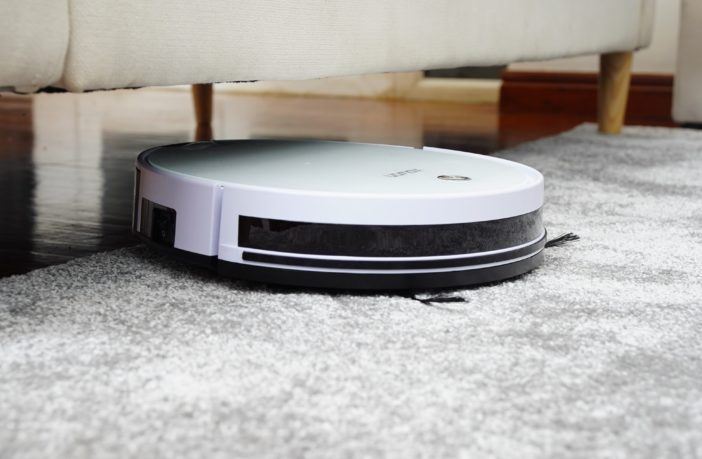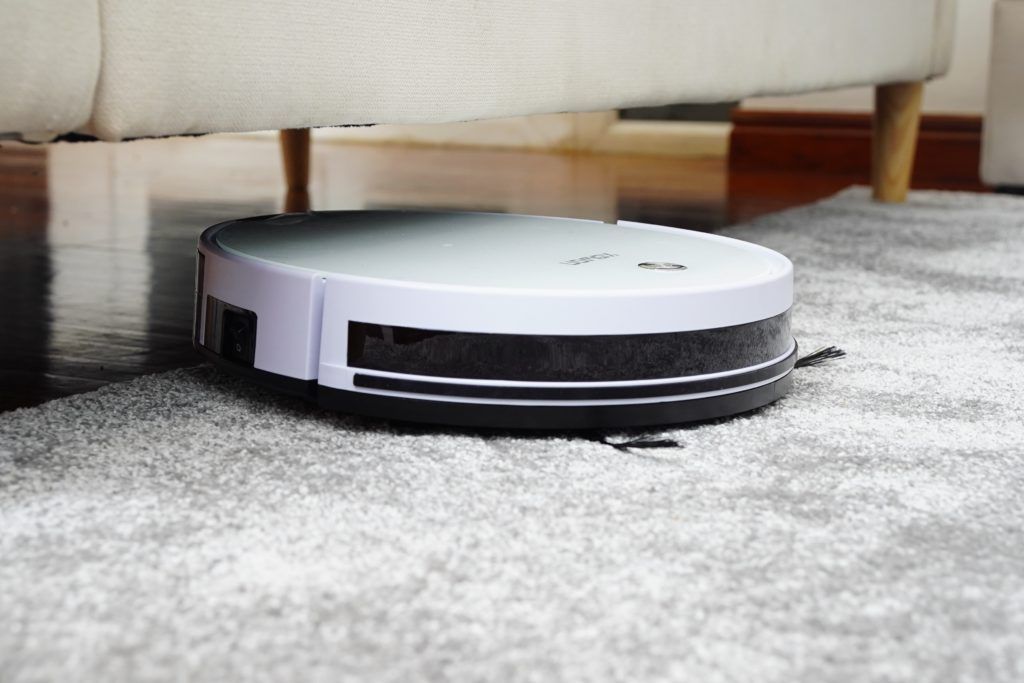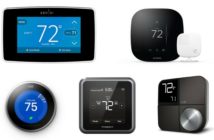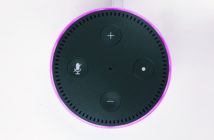Vacuuming can be quite the tedious chore. The constant build-up of dirt and dust around your home makes it feel like a futile effort, especially if you have pets that shed hair everywhere.
This is where a robot vacuum cleaner can help! These little bots make a big difference in keeping your place as clean as it can be.
Are you still skeptical or unsure about purchasing a robot vacuum for yourself? This guide will explain how a robot vacuum works, the many benefits of having one, and how it holds up against a regular vacuum cleaner.
Contents
What is a Robot Vacuum?
Robot vacuums are basically computerized cleaning machines that roam around your house to brush and vacuum up the dirt and grime from your floor.
They come in handy while you are away or if you don’t have the time to do it personally.
The latest products are able to remember the layout of your home – knowing which places need cleaned, dumping their collected debris in a trash receptacle, and finding their way back to the charging station to do it all over again.
They can also connect to the internet, which means you can program where, when, and how they clean your house from your smartphone or tablet with a simple app—even when you’re away from home!
Benefits of a Robot Vacuum
Better Access
The greatest benefit of robot vacuums is the fact that they can reach places regular vacuum cleaners can’t. For example: underneath tables, chairs, and other furniture.
Easy to Use
Robot vacuum cleaners are also extremely simple to use, even for those who are more technologically averse.
Once its battery is fully charged, you simply press the big button on top of it. It will go off and clean without needing much help at all.
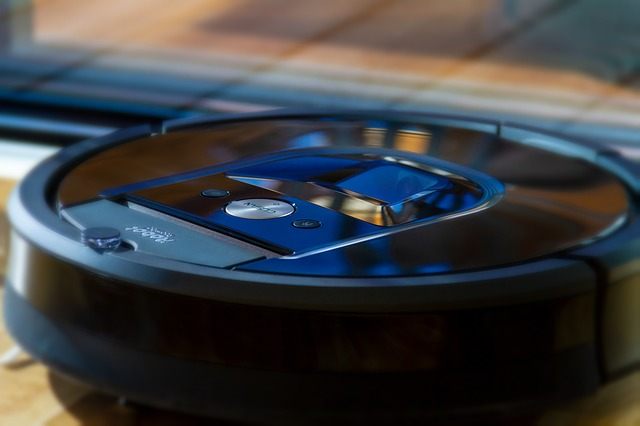
Programmed Schedules
You can program your robot to follow a strict daily or weekly cleaning schedule as well. Handicapped and elderly consumers may find this feature especially helpful to their everyday lives.
A busy parent who wants to keep their home tidy while at work may also enjoy the convenience this vacuum brings.
Simple to Move
They are also lighter and easier to carry up your stairs than your standard, upright vacuum cleaner. There’s no worry of it falling downstairs throughout its cleaning routine and breaking itself into pieces.
All robot vacuums are programmed with a ‘sensor eye,’ which allows them to clean right up to the edge of the top step, then head back to safety.
Robot Vacuums vs. Normal Vacuums
While robot vacuum cleaners are certainly useful, they do not have the suction power of a standard vacuum cleaner.
Even more disappointing, after 15 years of development, they still can’t clean stairs. At least, not without making any serious compromises to their overall maneuverability and form-factor.
As such, you’ll still have to use a normal vacuum cleaner for your stairs. Some might argue that this defeats the entire purpose of owning a robot vacuum in the first place.
Nonetheless, there is still hope for robot vacuums. There are a couple of pre-production prototype vacuums in the works that are able to climb and clean stairs at the same time.
However, it may be some time before we see these kinds of vacuums on the market.
If you’re simply looking for an easy-to-use tool that deals with everyday surface dirt, then getting a robot vacuum may be a good purchase to make.
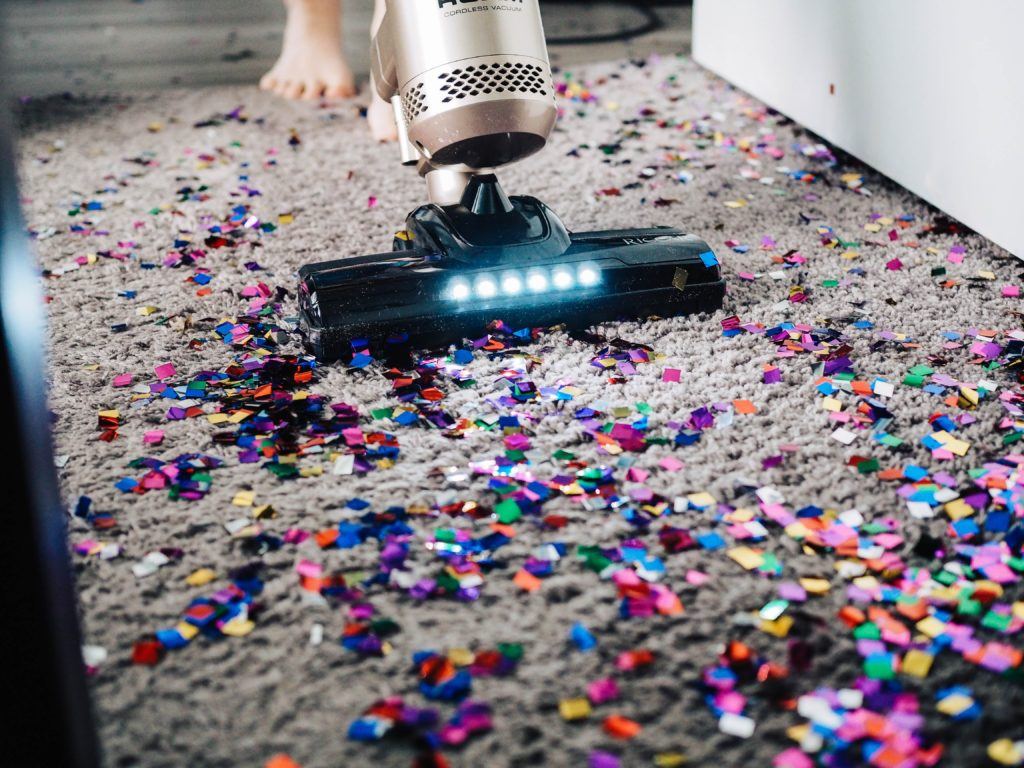
How Do Robot Vacuums Work?
Robot vacuum cleaners pick up dirt and dust with a combination of three tools.
- Spinning brushes, which push dirt underneath them and direct it toward the powerful vacuum.
- A strong vacuum that then sucks up all the debris into its little storage bin.
- Two tractor-style wheels that maneuver the bot from room to room and between obstacles. Each wheel is independently driven by their own electric motor. This can make them turn in opposite directions to access difficult places it needs to clean.
Its wheels also contain optical encoders, which are important sensors that tell it how far it has gone.
These optical encoders use a light sensor to detect how many times each of the wheels have rotated to calculate this data.
Each complete rotation – including any turns it completes – helps your robot vacuum tell how far it has traveled, both inside your home and in total.
Though this data may not be of interest to you, this collection of information gives your robot a better understanding of your home’s layout, as well as how to perform its duties in a more efficient manner.
Beyond these three main components, other tools are used to maximize their performance.
Rechargeable Batteries
Many robot vacuums operate via onboard, rechargeable battery packs.
When the bot senses that its battery is running out, or when it’s finished cleaning a room, it will rush back to its charging station to power back up.
This ensures you don’t have to worry about it dying in the middle of cleaning your house.
Debris Container
Nearly all robot vacuum cleaners are bagless. Instead, they store the debris, dirt, and dust they pick up in tiny plastic bins or tubs.
These should be emptied every three or four cycles (unless you bought one that automatically empties itself, of course).
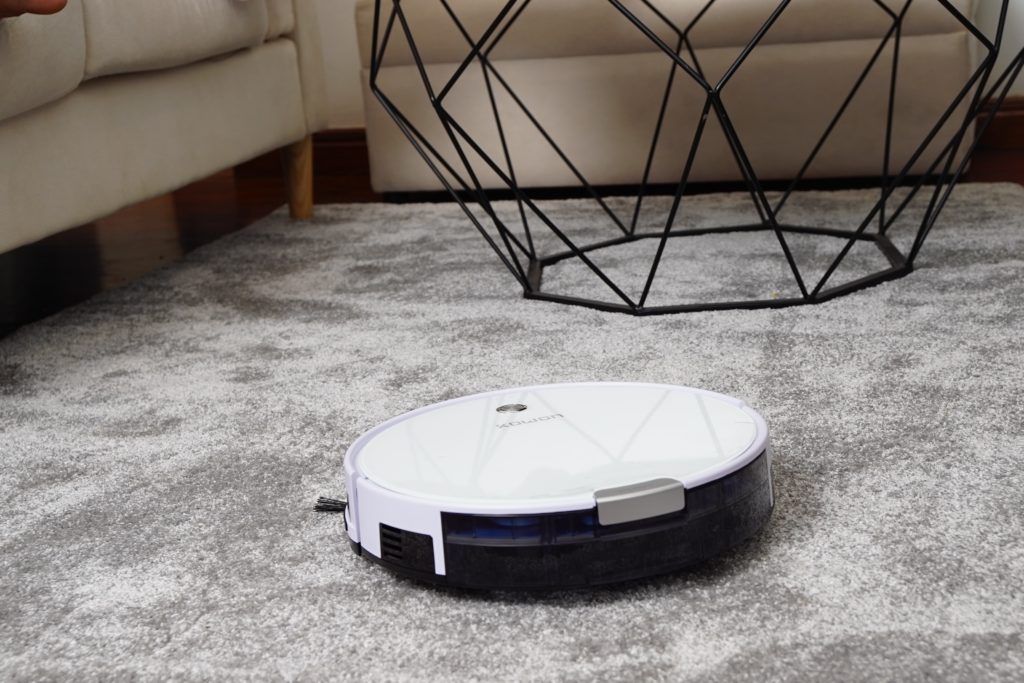
Filters
All robot vacuums have filters that should be changed every three to six months, depending on how frequently you use it.
It’s best to get a HEPA filter for your robot vacuum. These filters are able to capture very minuscule particles, which makes this perfect for those who suffer from seasonal allergies.
The filter is also washable and reusable, so it’s a win-win.
Sensors
A robot vacuum has various types of sensors that help it to “see” the world around it and decide what areas need to be cleaned.
Even if your robot vacuum has a camera attachment, it mainly relies on these sensors to navigate its way around your home.
From a robot vacuum’s point of view, your home is an obstacle course full of things that impede its sole duty of keeping your place clean. As such, these sensors are important.
They detect obstacles and other hazards in its path, measure how far it has traveled, and discover new areas they can clean for you while you’re away.
These sensors also program and adjust the robot’s cleaning schedule, helping it to determine a course of action.
Here’s a video explaining more about how robot vacuums work.
Types of Robot Vacuum Sensors
Impact Sensors
A robot vacuum comes with sensors located on (or near) its shock-absorbing bumpers, which allow it to steer around obstacles without slowing down.
When its sensitive bumpers hit an object, the sensors are triggered and allow the robot vacuum to turn away.
If it brushes up against tassels, cords, or cables, rather than getting tangled up in them, it will immediately rotate and drive itself to safety.
Speed Sensors
It should also have an infrared beam and photocell sensor on the front, which detects walls or other large obstacles nearby. This warns the bot to slow down when it gets near these barriers.
Infrared sensors underneath it also detect “cliffs”, otherwise known as stairs and steep drops.
Debris Sensors
Your robot vacuum will know when it hits a particularly dirty patch in your house due to its piezoelectric sensor. This is essentially a crystal inside the robot, which generates electrical impulses based on how many items strike it.
These electric impulses trigger the robot to recognize the area as especially dirty. Then, it will retrace its steps to clean that area more slowly and thoroughly.
Different robot vacuum cleaner brands will have different types of excessive dirt sensors, of course, but they all essentially work the same.
For example, the Roomba Red has two dirt sensors located above its agitator brush. When the brush sucks up a large amount of dirt, the dirt then hits the metal plates of the sensors, which in turn tell the Roomba to go over the area again.
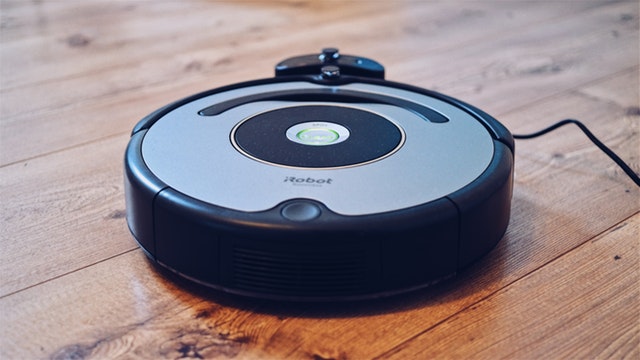
Floor Type Sensors
That particular model can also automatically adjust its height when it senses a half-inch (or 1.3-centimetre) rise in the floor surface.
This allows it to transition more easily between different floor types (from a rug to hardwood, for example).
Room Sensors
Some Roomba models have a special mode called the Virtual Wall Lighthouse mode, which is a more advanced version of its infrared and photocell sensors.
Lighthouse mode allows the Roomba to “understand” where one room ends and another begins, so it cleans one room at a time before moving to the next.
Off-Limits Area Sensors
These models even have a “virtual wall” mode that allows you to set up invisible barriers. These then bar the robot from accessing the areas beyond them.
Of course, you can always close certain doors or put down big books to prevent it from getting into certain areas, but where’s the fun in that?
Dust Sensors
Different models will have additional sensors, like a dust scanner to see how much dust is being picked up.
However, all robot vacuums use the same basic sensors to function.
Robot Vacuum Brands
When most people think of robot vacuum cleaner brands, the Roomba is usually the only one that comes to mind. In fact, one of the leading robot vacuum manufacturers to date is iRobot.
While their Roomba models may pose a barrier to entry for some curious consumers (costing anywhere from $300 to as much as $900 a pop), there is no denying that this brand has quickly become a household name.
However, there are a lot of models and brands available today, ranging in price from as low as $50, all the way up to a whopping $1,800.
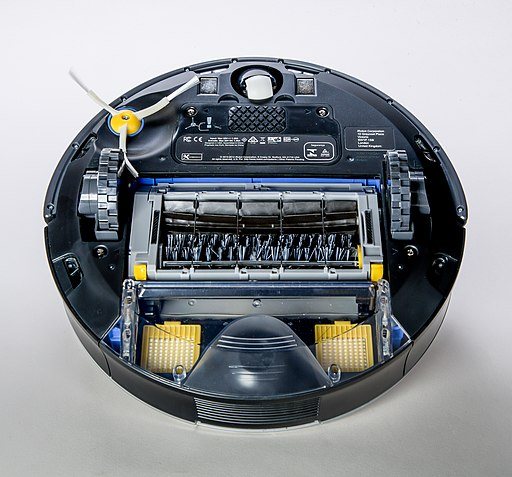
PC Reviews rated several different brands and models of robot vacuum cleaners against each other. The result? Pretty much all robot vacuum brands can handle cleaning both hardwood and pet hair.
So, if you want to buy a robot vacuum for pet hair, any of the brands available will do a good job at it. Some of these vacuums even come with mop attachments, making them an incredible two-for-one machine.
If you are still unsure what brand or model to go with, here are a few key things to look at before purchasing a robot vacuum:
- Battery Life and Recharge Times. Lithium-ion batteries tend to be best!
- HEPA Filters. As stated above, these filters suck up the majority of tiny dust particles around your home.
- Accessible Replacement Parts. Good filters, brushes, batteries, and wheels are very important for keeping your robot in good shape. While buying filters from third-party retailers is more affordable than buying from the manufacturer, you should always buy the other internal electronics directly from your robot’s manufacturer. This ensures you don’t risk voiding your warranty or damaging your robot.
- A Cleaning Schedule Feature. You can manually boot up your robot when cleaning is needed, but an automatic feature is expected in the latest generation.
- Intelligent Mapping Systems. Your robot should be capable of learning the layout of your home over time, so that they can clean it more efficiently.
Do I Need a Normal Vacuum as Well?
If you’re content with the vacuum you have, you may want to think twice before getting a robot vacuum cleaner.
Though robot vacuum cleaners are very handy, they are, unfortunately, not sophisticated enough to replace more standard vacuums.
They can’t tidy up curtains or thoroughly clean upholstery, so keeping a traditional vacuum cleaner with a hose attachment is still quite useful.
Mostly, they are used to supplement the vacuum cleaner that you have. They are only meant to perform daily or weekly touch-ups in between your regular vacuuming cycles.
Even so, this tiny robotic helper can still keep your floor relatively clean, and you hardly have to lift a finger!
This video goes into more detail on the differences between a vaccum cleaner and a robot vacuum.
Conclusion
Vacuuming your entire house takes up time and energy that you may not have at the end of the day.
Owning a robot vacuum can easily alleviate the stress of keeping your floors clean when you don’t have the time. Why not try one out?
What’s your favorite thing about having a robot vacuum?

